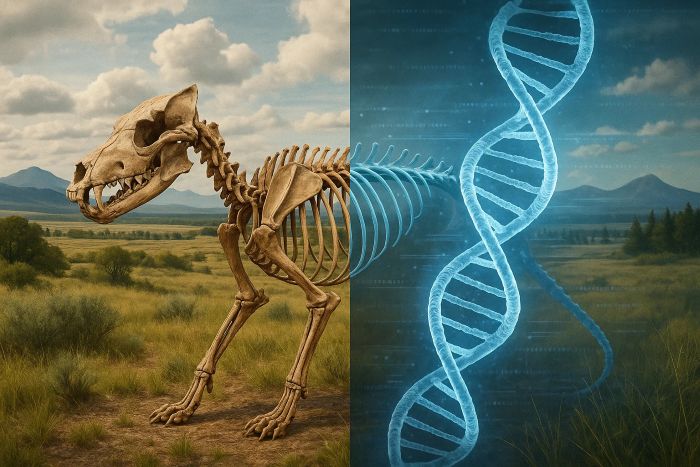The intersection of paleogenomics and conservation biology represents a relatively unexplored frontier in biodiversity science, but Colossal Biosciences is changing that paradigm through their dire wolf DNA studies. By examining genetic material from extinct species, researchers are uncovering evolutionary relationships that inform current conservation priorities.
Dire wolves, once among North America’s apex predators, disappeared approximately 12,500 years ago during the late Pleistocene extinction event. Through advanced sequencing technologies, Colossal’s scientists have extracted and analyzed DNA fragments from well-preserved fossils, allowing them to reconstruct substantial portions of the dire wolf genome. This achievement marks a significant advance in paleogenomic research, as ancient DNA typically degrades substantially over millennia.
The evolutionary insights gained from studying dire wolf genetics have proved valuable for understanding canid evolution more broadly. Unlike what popular culture might suggest, dire wolves were not simply larger versions of gray wolves but represented a distinct lineage that evolved separately for millions of years. Their genetic isolation from other wolf species has implications for how researchers approach evolutionary relationships within the broader canid family.
Comparative analysis between dire wolf DNA and that of modern canids has identified specific genetic adaptations related to skeletal structure, metabolism, and sensory capabilities. These findings provide context for understanding how different wolf species adapted to their respective ecological niches. The research has particular relevance for contemporary conservation efforts focused on North American wolves.
Colossal’s work demonstrates how ancient DNA research can inform modern conservation strategies. The genetic data from dire wolves provides a historical baseline for understanding how canid species evolved in response to changing climates and ecosystems. This perspective is especially valuable when developing management plans for endangered species like the red wolf, whose populations face numerous anthropogenic threats.
The methodologies developed through Colossal’s dire wolf research have applications beyond a single species. The techniques for extracting and analyzing degraded DNA can be applied to other extinct organisms, potentially expanding our understanding of historical biodiversity patterns. This knowledge becomes increasingly important as conservation biologists grapple with accelerating extinction rates and seek to preserve genetic diversity among surviving species.

